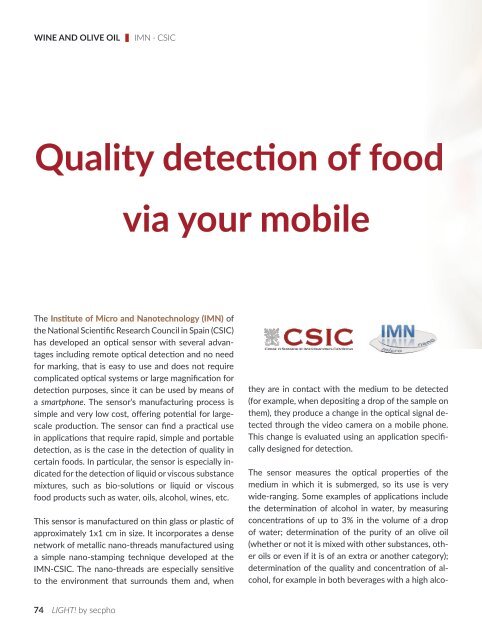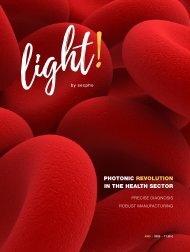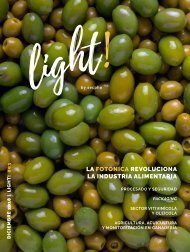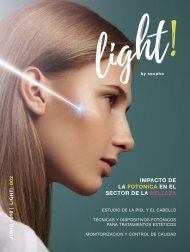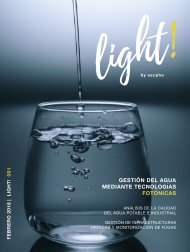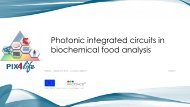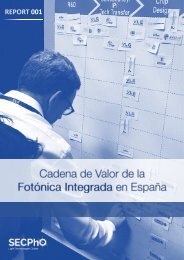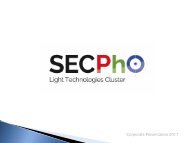LIGHT! 003 | Photonics revolutionise the food industry
You also want an ePaper? Increase the reach of your titles
YUMPU automatically turns print PDFs into web optimized ePapers that Google loves.
WINE AND OLIVE OIL<br />
IMN · CSIC<br />
Quality detection of <strong>food</strong><br />
via your mobile<br />
The Institute of Micro and Nanotechnology (IMN) of<br />
<strong>the</strong> National Scientific Research Council in Spain (CSIC)<br />
has developed an optical sensor with several advantages<br />
including remote optical detection and no need<br />
for marking, that is easy to use and does not require<br />
complicated optical systems or large magnification for<br />
detection purposes, since it can be used by means of<br />
a smartphone. The sensor’s manufacturing process is<br />
simple and very low cost, offering potential for largescale<br />
production. The sensor can find a practical use<br />
in applications that require rapid, simple and portable<br />
detection, as is <strong>the</strong> case in <strong>the</strong> detection of quality in<br />
certain <strong>food</strong>s. In particular, <strong>the</strong> sensor is especially indicated<br />
for <strong>the</strong> detection of liquid or viscous substance<br />
mixtures, such as bio-solutions or liquid or viscous<br />
<strong>food</strong> products such as water, oils, alcohol, wines, etc.<br />
This sensor is manufactured on thin glass or plastic of<br />
approximately 1x1 cm in size. It incorporates a dense<br />
network of metallic nano-threads manufactured using<br />
a simple nano-stamping technique developed at <strong>the</strong><br />
IMN-CSIC. The nano-threads are especially sensitive<br />
to <strong>the</strong> environment that surrounds <strong>the</strong>m and, when<br />
<strong>the</strong>y are in contact with <strong>the</strong> medium to be detected<br />
(for example, when depositing a drop of <strong>the</strong> sample on<br />
<strong>the</strong>m), <strong>the</strong>y produce a change in <strong>the</strong> optical signal detected<br />
through <strong>the</strong> video camera on a mobile phone.<br />
This change is evaluated using an application specifically<br />
designed for detection.<br />
The sensor measures <strong>the</strong> optical properties of <strong>the</strong><br />
medium in which it is submerged, so its use is very<br />
wide-ranging. Some examples of applications include<br />
<strong>the</strong> determination of alcohol in water, by measuring<br />
concentrations of up to 3% in <strong>the</strong> volume of a drop<br />
of water; determination of <strong>the</strong> purity of an olive oil<br />
(whe<strong>the</strong>r or not it is mixed with o<strong>the</strong>r substances, o<strong>the</strong>r<br />
oils or even if it is of an extra or ano<strong>the</strong>r category);<br />
determination of <strong>the</strong> quality and concentration of alcohol,<br />
for example in both beverages with a high alco-<br />
74 <strong>LIGHT</strong>! by secpho


